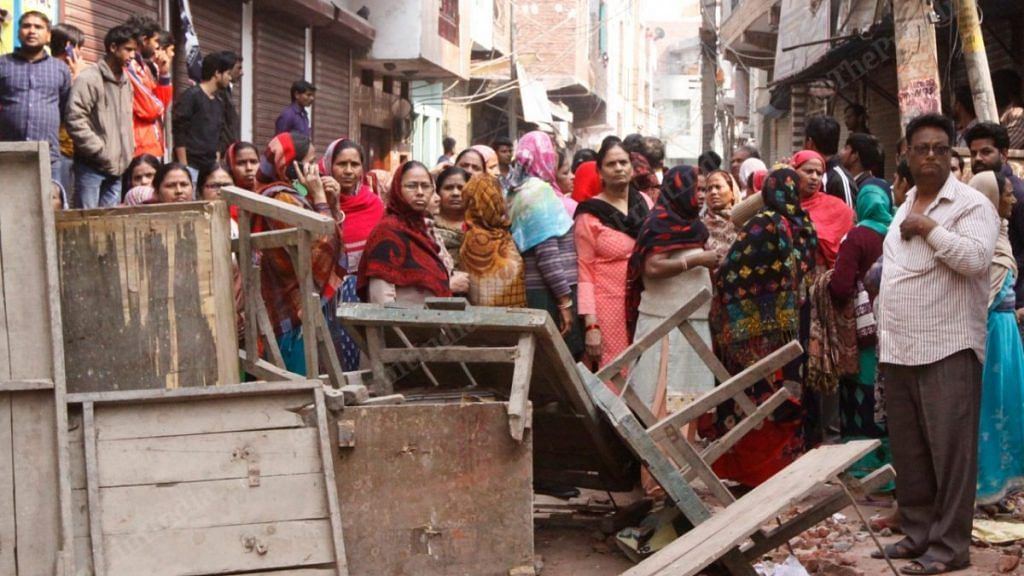It’s barely been a week since communal riots tore through the streets of Delhi, and everything is ‘normal’ again. Coronavirus and PM Modi’s social media adventures have taken the centre stage, displacing the killing of more than 40 people. The only thing left are the chants of ‘Jai Shri Ram’ and ‘Bharat Mata Ki Jai’. The latter, Manmohan Singh says, is being misused. Narendra Modi interpreted it as Singh’s objection to the chant.
Just this Sunday on Delhi streets, the Bharat Mata Ki Jai chants – an otherwise innocuous patriotic slogan – produced a menacing web of rumours.
In the void of any impactful action on Delhi riots, it’s the rumours that rang through the loudest. And rumours are the oldest tool to start a Hindu-Muslim riot.
“Markets have been shut in Rohini.”
“People are walking around with lathis and sticks in Katwaria.”
“A colleague in Jamia Nagar has packed his family’s bags because they’re fleeing…”
“I heard there’s some unrest in Sarita Vihar. Can anyone confirm?”
“Does anyone have any news?”
“Can you confirm…?”
For several hours Sunday night, messages like these filled up my inbox — all defined by the same underlying fear and confusion.
Also read: ‘Wore saree to look Hindu’ — How women in riot-hit Northeast Delhi escaped the mob
Messaging rumours
WhatsApp groups with friends, colleagues and old college mates relayed similar, sometimes identical, messages.
The barrage of potentially bad news came as I wound up work and continued throughout my metro ride back home.
It occurred to me that, apart from nifty thieving fingers and pervy hands (and stares), I now had to watch out for Jai Shri Ram-chanting flash mobs on the metro too.
What would I do if a group of men started yelling, “Goli maaro… Jai Shri Ram!” in front of me? Would I look down and hurry away? Would I capture it on my cell phone camera and post it on Twitter?
Would it be good to yell, “same to you!”?
But what really struck me was how one’s political affiliations are now conspicuously part of the public space.
Delhi Metro, while certainly more elite than Mumbai’s locals, is still something of an equaliser; a common space where we all have to wait for a seat, where we are required to be more conscientious of the space we share, and more compassionate towards fellow travellers.
But all of a sudden, that bonhomie has changed into something menacing. I now look at my co-passengers and wonder whom they voted for, if they would tell overtly Sanghi passengers to shut it and take their chanting outside the Metro, whether they would give their seat to a pregnant/old/sick Muslim.
Also read: After week-long terror & dread, children bring the smiles back in riot-hit Northeast Delhi
Keep calm. Is that so?
The cacophony of intermittent sirens Sunday left one wondering how tense Delhi might be. All through that evening, Delhi Police maintained there was no violence anywhere and that there were concerted efforts to spread rumours.
Don’t panic, they said.
But what if it was Delhi Police pulling off the biggest rumour of all — that everything is fine? What if it wanted to lull us into complacency by hiding the tension and hate? The police rounded up several people for spreading “fake news” as it cracked down on the sources of rumours.
On a chat group, a friend said their domestic worker saw men with swords on the main road where several vehicles were apparently burned down. There was nothing in the news that substantiated the claim. In this climate of fear, you take everything you hear to be as true as it is false.
There was trouble, but there wasn’t any trouble. You have to barricade your doors and also be out there reclaiming public space.
Nine days since the first clashes broke out in northeast Delhi, the bodies are still being counted and the dead are still turning up. A Muslim man buried his two sons, aged 30 and 19, Saturday. A Hindu rickshaw-puller who went to buy milk for his children didn’t come back for days. When he did, it was on a stretcher that eventually went to the cremation ground.
The stories are horrible, gut-wrenching, and disturbing. And it has conditioned us to expect, and believe, the worst.
But the level that matters the most is — what would you do?
